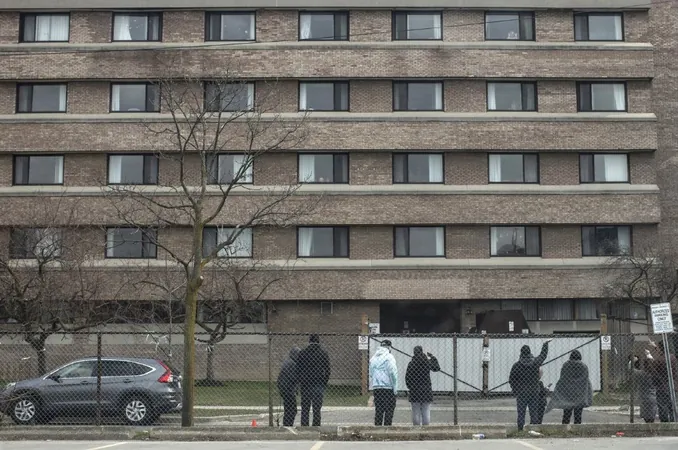
Ontario Falls Short on Direct Care Goals for Long-Term Care Residents – What This Means for the Future!
2024-11-25
Author: Benjamin
Ontario Falls Short on Direct Care Goals for Long-Term Care Residents
Ontario's government has recently come under fire for failing to meet its own legislated target in providing hands-on care to long-term care residents. A freshly updated report reveals that the province did not achieve its goal for the average number of care hours residents should receive this past fiscal year, raising concerns about the state's commitment to the vulnerable population it serves.
The Progressive Conservative government had set a target in a 2021 law intended to ensure that residents receive a minimum average of three hours and 42 minutes of direct care by March 31 of this year. However, it appears that Ontario did not hit this benchmark, despite claiming that it has since reached its goal for the 2023-24 fiscal year.
As attention turns to future plans, the government asserts that it is working towards a more ambitious target: guaranteeing four hours of hands-on care daily from nurses and personal support workers by the end of the current fiscal year in March 2024. While previous interim goals were met, this setback raises big questions about the overall quality of care in Ontario’s long-term care facilities.
In an unexpected twist, the update regarding the unmet goal was added quietly to the bottom of a 2020 staffing plan posted online, without any public announcement. This lack of transparency has prompted criticism from opposition members, with many calling the government's communication tactics disgraceful. NDP long-term care critic Wayne Gates stated, 'This way of communicating shows they are not taking this file seriously.'
The report does offer some hope, indicating that Ontario “exceeded” its direct care hours target during the first quarter of the 2024-25 financial year, attributing a 33% increase in direct care since 2021 to unprecedented government investments. However, this improvement begs the question of sustainability as the province grapples with chronic staffing shortages.
Documents obtained through freedom-of-information requests reveal that bureaucrats had previously warned that a lack of staffing could jeopardize the province's commitment to direct hours of care. Presently, there is a substantial shortfall of workers, estimated at 13,200 additional nurses and 37,700 personal support workers needed to fulfill current demands in long-term care across Ontario.
Ricardo McKenzie, director of long-term care for SEIU Healthcare, emphasized that reliance on temporary staffing arrangements is not a sustainable answer. The alarming turnover rates—25% among personal support workers and as high as 38% in some long-term care homes—highlight the impelling need for stable, well-paying jobs to retain staff in the sector.
The government’s initiatives thus far include a 6.6% increase in funding and efforts to expand training programs, but industry leaders argue that wage disparities between jobs in community health and other areas, such as hospitals, leave long-term care facilities struggling to compete for talent. Lisa Levin, CEO of AdvantAge Ontario, pointed out that wages for personal support workers, especially during the pandemic, inadvertently pushed out registered practical nurses, exacerbating the staffing crisis.
As Ontario navigates these rough waters, the need for solid, effective leadership in the long-term care sector has never been clearer. With each missed target, the pressures on the healthcare system mount, and both the government and the population must reconsider how best to prioritize the care of its aging residents—because they deserve more than just the minimum requirements.
Will Ontario take the necessary steps to ensure that its long-term care residents receive the quality care they need? Only time will tell, but residents and their families are waiting for more than just promises—they demand action!









 Brasil (PT)
Brasil (PT)
 Canada (EN)
Canada (EN)
 Chile (ES)
Chile (ES)
 España (ES)
España (ES)
 France (FR)
France (FR)
 Hong Kong (EN)
Hong Kong (EN)
 Italia (IT)
Italia (IT)
 日本 (JA)
日本 (JA)
 Magyarország (HU)
Magyarország (HU)
 Norge (NO)
Norge (NO)
 Polska (PL)
Polska (PL)
 Schweiz (DE)
Schweiz (DE)
 Singapore (EN)
Singapore (EN)
 Sverige (SV)
Sverige (SV)
 Suomi (FI)
Suomi (FI)
 Türkiye (TR)
Türkiye (TR)